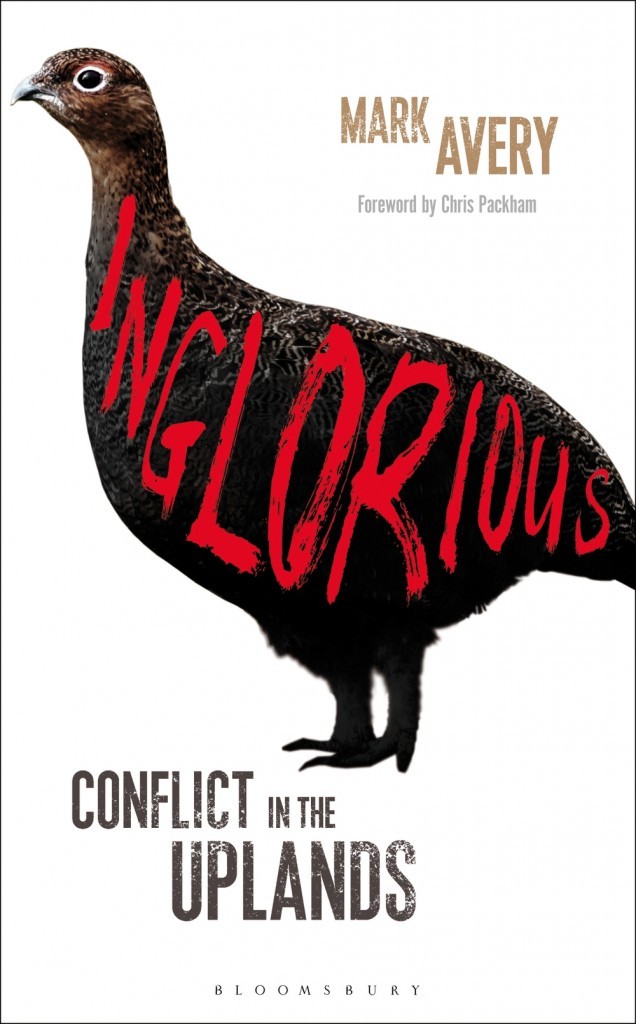Hebden Bridge resident Myra James reports on Mark Avery’s talk at the Trades Club on 14th October 2015
Conservationist and campaigner Mark Avery came to Hebden Bridge Trades Club to speak to a sizeable audience, hosted by Ban the Burn, about his new book, Inglorious: Conflict in the Uplands and his campaign for driven grouse shooting to be banned.
Mark’s argument is that there is no compromise whereby protection of the uplands environment and driven grouse shooting can co-exist. In a talk that was positive and inspirational about how change can be achieved, he predicted that driven grouse shooting will come to an end within the next 20 years – its continuance is unsustainable, illogical and harmful to wildlife and the wider environment.
Some interesting facts about driven grouse shooting:
- It began only around 150 years ago, following the development of shotguns with a fast re-loading mechanism;
- It happens only in our islands. When huntin’ and shootin’ types in other countries learn about what passes for the “sport” of shooting in this country they are astonished and unimpressed – it’s cheating!
- the use of lead shot means that grouse (and other game) exceed safe levels of lead in meat – Denmark banned lead shot years ago so why doesn’t the UK?
In order for driven grouse shooting to be financially viable, the moors must be intensively managed to support an unnaturally large population of red grouse. Heather is burned to ensure there is an adequate supply of the young heather on which grouse feed – despite recent Leeds University research that clearly shows that even “cool burning” damages the peat and increases flood risk in rivers in the area.
Mark Avery reported that he saw heather burning taking place as he drove over the tops from Keighley to Hebden Bridge; and members of the audience also had seen heather burning over the last few days.
Dongria Kondh asked people to report to Ban the Burn if they saw burning taking place. You can post information on the Ban the Burn facebook page, or email Plain Speaker and we will pass the info on to Dongria.
The blanket bogs are damaged by burning and draining; the UK has about 13% of the world’s blanket bog, a rare habitat that acts as a carbon sink and also helps prevent flooding. The UK Committee on Climate Change recently reported:
“…harmful land management practices persist, particularly on sensitive peat habitats in the uplands… the majority of upland areas with carbon-rich peat soils are in poor condition. The damaging practice of burning peat to increase grouse yields continues, including on internationally-protected sites. The Government has set ambitious targets to improve the ecological condition of important habitats and halt the decline in England’s biodiversity. However it is far from certain that these goals will be met…Key indicators of environmental quality continue to move in the wrong direction, putting at risk clean water, and carbon storage.”
Damage to blanket bogs from management practices associated with grouse shooting is a significant source of increased carbon emissions; as the peat dries out and erodes, it releases stored carbon into the atmosphere. The UK Committee on Climate Change report calls for a review of the effectiveness of agri-environment schemes in controlling damaging practices on internationally-protected peatland sites. It also says (p32) that by the Summer of 2016:
“Natural England, in partnership with the Upland Stakeholder Forum, should take action to deliver the widespread restoration of upland peat habitats which includes a programme for reviewing existing consents for burning on protected sites and an assessment of whether agri-environment schemes are funding damaging land management practices.”
Mark Avery said that he thinks the EU will clobber the UK government for not enforcing EU wildlife and habitats protection laws on Walshaw Moor Estate and other protected uplands.
He also talked about how grouse moor owners and gamekeepers are killing grouse predators e.g. foxes, stoats and birds of prey. The protected hen harrier has suffered particularly badly and is the focus of Mark’s campaign to make sure that Wildlife protection laws are enforced.
In his talk, Mark selected an unfortunate group of six at the front of his audience to represent the shooting fraternity – people wealthy enough to pay thousands of pounds for a day’s shooting. In order for them to enjoy what many of us might view as a bizarre pastime, the rest of us suffer from the impacts of a damaged uplands environment, including higher home insurance premiums related to increased flood risk and higher water bills because of impacts on water quality – such as increased discolouration due to peat being washed into reservoirs as the blanket bog is degraded by burning and draining. Cleaning the water adds to Yorkshire Water’s costs and of course they pass this on to customers.
Mark Avery recommended that Yorkshire Water customers write to Yorkshire Water objecting to these extra costs and asking them to refuse to allow the uplands that they own to be used for grouse shooting.
Mark urged everyone to sign the Parliamentary petition to ban driven grouse shooting. It already has more than 22K signatures.
Mark’s book, with a foreword by Chris Packham, is available from the Book Case in Hebden Bridge and is an excellent and very readable source of more information about driven grouse shooting and why it has to end.


Pingback: Following the Calderdale Wind Farm money – would you want your bank or pension fund investing in this scheme? – Save And Restore Walshaw Moor
An excellent article that puts the main issues clearly.People are becoming increasingly aware of how grouse moor management often involves illegal practices and highly damaging outcomes to our Uplands which is not only bringing about their demise but contributes to the misery of flooding in our communities.
Pingback: More flooding in Lancashire, Yorkshire and North Wales from a Storm with no name | A Dartmoor blog